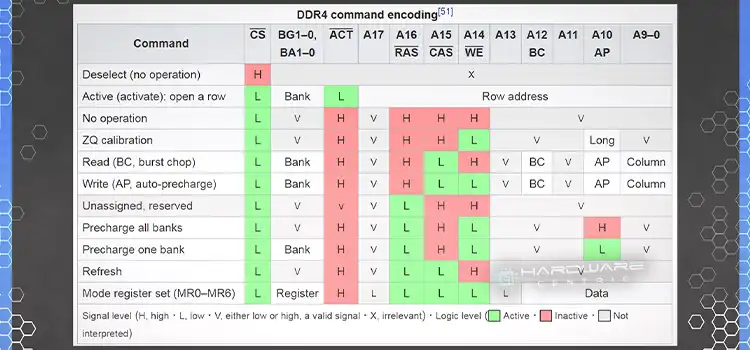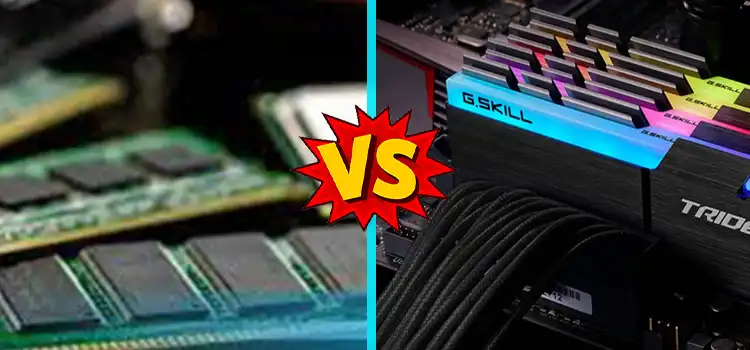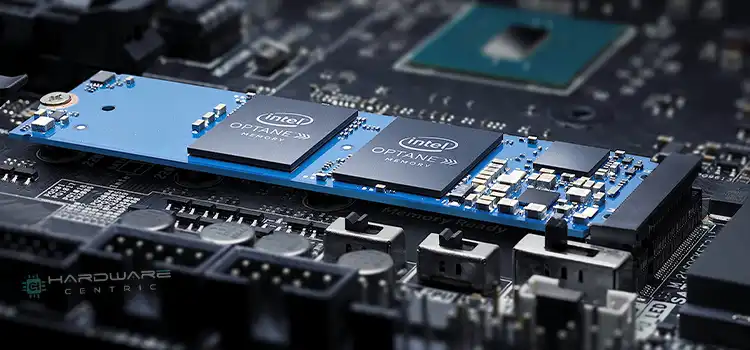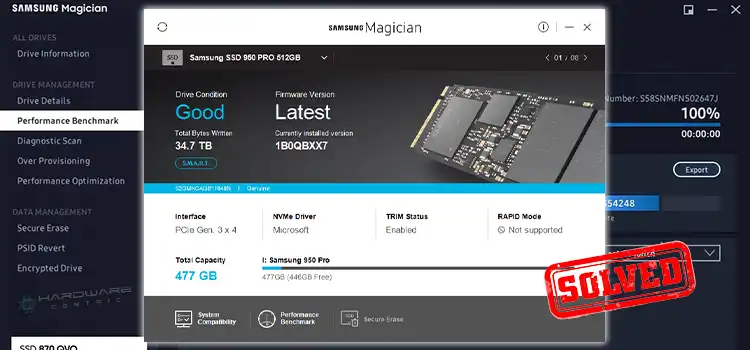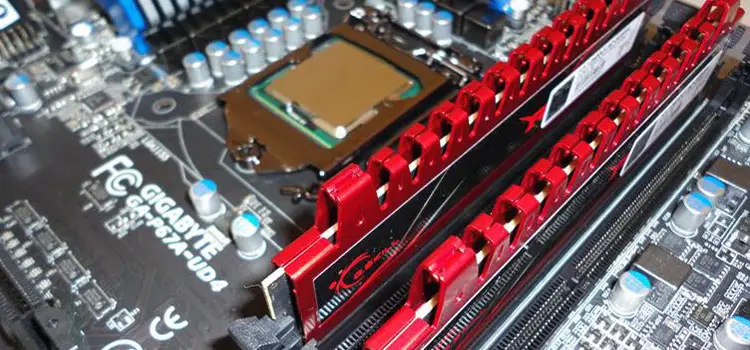16 GB 1333MHz vs 8 GB 1600MHz RAM | Comparison Between Them
Your device can perform a variety of tasks based on your requirements. As an illustration, Windows 10 is configured to perform with 8GB of RAM. As a result, subtract 2GB from the total of 8GB for Windows 10. 6GB is sufficient for operating all apps such as antivirus, malware, Microsoft Office, and 20+ separate websites. You’ll notice your device getting slower or is not going to respond well because it would ordinarily when only a few processes are running whenever you enter and use more of this 6GB storage space.
As a result, 16Gb RAM would be able to accommodate twice as many running processes. This is similar to the difference between a car with such a tiny fuel system (8GB) and then a car having such a large gas chamber (16GB). The car with the 16GB gas tank would be able to travel much farther.
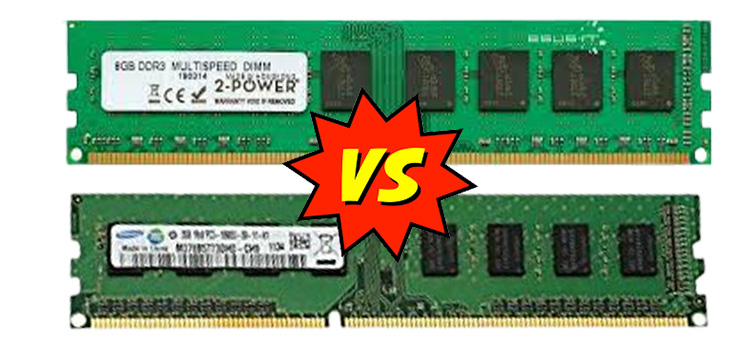
16 GB 1333 vs 8 GB 1600 – Which Is Better?
The structure of your system memory is determined by the components of your device. For instance, Two Channel might perform best when two RAM sticks were placed in matching pairs. As an example, if your desktop had two 4GB sticks for every slot (there were only two slots) as well as you needed 16GB coupled for such speed of dual-channel, you’d like to eliminate the two 4GB sticks and then replace them with two 8GB sticks. When you have such a windows pc with 4, 6, or 8 ports, you would place your Storage device in the positions that were color-coded according to the number of slots. Multi-channel, 4×4, and greater changeling configurations are available for backend panels.
It is dependent on the situation. In terms of gaming, I would recommend 16 GB of RAM. The difference in performance between 1333 and 1600 isn’t significant, as well as the two capacities aren’t that far away on the Memory speed spectrum, so, as I previously stated, the performance gap between both 1333 and 1600 isn’t that significant. In my perception, several games require over 8 GB of RAM, and also in games these days just 8 GB of RAM, 16 GB of RAM would therefore provide you with some additional extra space for background implementations and other such things, resulting in a far more enjoyable overall gaming experience. The 16 GB option is the best bet.
If you wanted to do dual sticks on 4GB inside the Yellow ports and achieve dual signal quality, you can use it, or maybe you could use dual sticks of 8GB inside the Orange ports and maintain dual channel operating having 24GB of RAM on your device. As a result, even though dual-channel speed is accessible, 12Gb Storage will not be able to take full advantage of it.
Reduced latency which is linked to improved timings, and increasing speed are the primary differences between both 1330 and 1600MHz RAM. To answer your question, the 1600mHz provides a larger speed, and that is the read/write ability. On average, this will result in a faster loading speed for the programs as well as higher performance, including that your programs do not exceed the 8GB limitations of the system memory.
So, let’s speak about speed. How else are you going to achieve 8GB or 16GB of channel capacity?
16GB is indeed an unusually huge quantity of Memory; you’d require 4x4GB and otherwise 8+8GB to achieve this; nonetheless, it’s normally suggested to use an even combination of RAM modules.
RAM sizes are available in separate stick kits of 2, 4, 8, or even 16GB, as well as two stick bundles, which are either of such doubled by two, and in dual connection configurations such as 2×2, 2×4, 2×8, 2×16, and so on.
Dual-channel literally Increases capacity, and this is the read/write performance of such memory, and two sticks of memory space running at 1333mHz with a dual-channel would still have better speeds than one 1600mHz stick of ram running in a single network. When it comes to speed comparisons, the capacities are immaterial until you have adequate total space to accommodate your operations.
Because of the larger bandwidth comprehended rates, if you could have to select either 16 GB with 1333mHz or 8GB with 1600mHz, the 16 Gb (dual-stream) would be the better and more efficiently performing choice in most cases.
Alternatively, if your program requires more than 8GB of storage and then you are forced to make a difficult decision between two faster 8GB sticks of 1600MHz or a reduced 1x16GB stick of 1333MHz, you should still go along with the faster memory, because the implementation will not run efficiently if it is constantly changing on the HDD/SSD contact area, or will not activate in any way.
For the sake of comparing response times, which are often calculated in nanoseconds, the slower package will typically have narrower CAS intervals and reduced latency.
Consequently, a relatively low package with speeds of 1333MHz will also have lower bandwidth than a greater speed package having durations of 1333MHz, although at faster speeds, particularly when considering DDR3 and DDR4, the data rates begin to increase. However, when you’re doing synthetic measurements in specific programs, the latency variations will not have a noticeable influence on performance as well as faster memory, yet the benefits of increased bandwidth can readily be detected in regular use when loading programs or playing games.
However, the speedier one would fall back to the delayed other’s speed, but it is the lowest of your concerns because it will not operate with a dual system either. Dual channel is indeed an improvement that effectively doubles the speed of the Memory; but, to function properly, you must have two RAM configurations that are identical in every way – not only in terms of size, speed, type, and producer but in every way possible. Kits are offered in quantities of two RAM units in a single container.
Certainly too far now, however, if you find yourself in a comparable position again, decide to sell the previous unit (to someone else) and purchase a kit to avoid repeating the mistake.
In case you do not play computer games using any memory-intensive programs, the capacity of your hard drive is more important to you than the speed of your connection. This does not imply that everything has come to a grinding halt; rather, it just indicates that things have not been carried out to their full potential.
Regarding the Memory speed listed in the manual, refer to the processor. If your motherboard allows overclocking to 1600MHz because you need to increase it, this is something to consider. The purchase of RAM that is meant to operate at elevated speeds is unnecessary when you have zero intention of overclocking…and the processor may refuse to accept the unnamed RAM if the chipset does not allow the higher specification.
Conclusion
It is clear by now that even though the 16GB RAM has a lower MHz than the 8GB (1333 < 1600), the 16GB offers better speed and performance because of having more storage capacity. So undeniably, the 16GB 1333MHz RAM beats the 8GB 1600MHz RAM and becomes the winner. Let us know your thought about this.
Subscribe to our newsletter
& plug into
the world of PC Hardwares
![[Fix] 3000MHZ RAM Running at 2133MHZ (100% Working)](https://www.hardwarecentric.com/wp-content/uploads/2022/10/3000MHZ-Ram-Running-at-2133.jpg)
